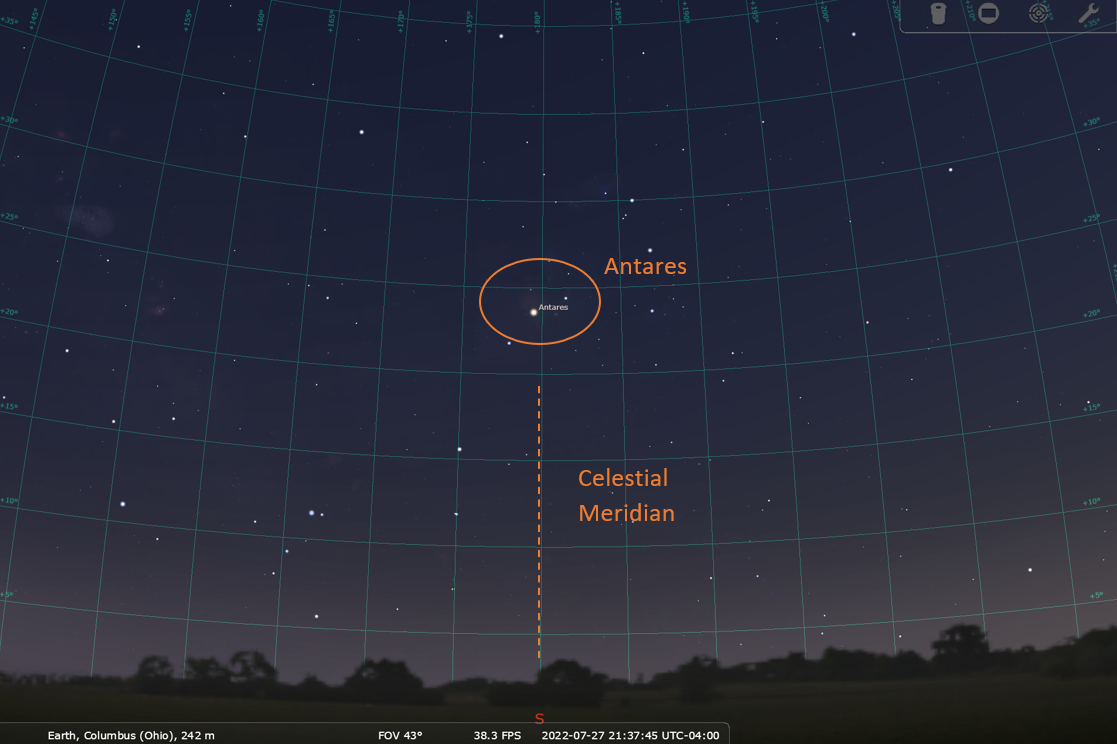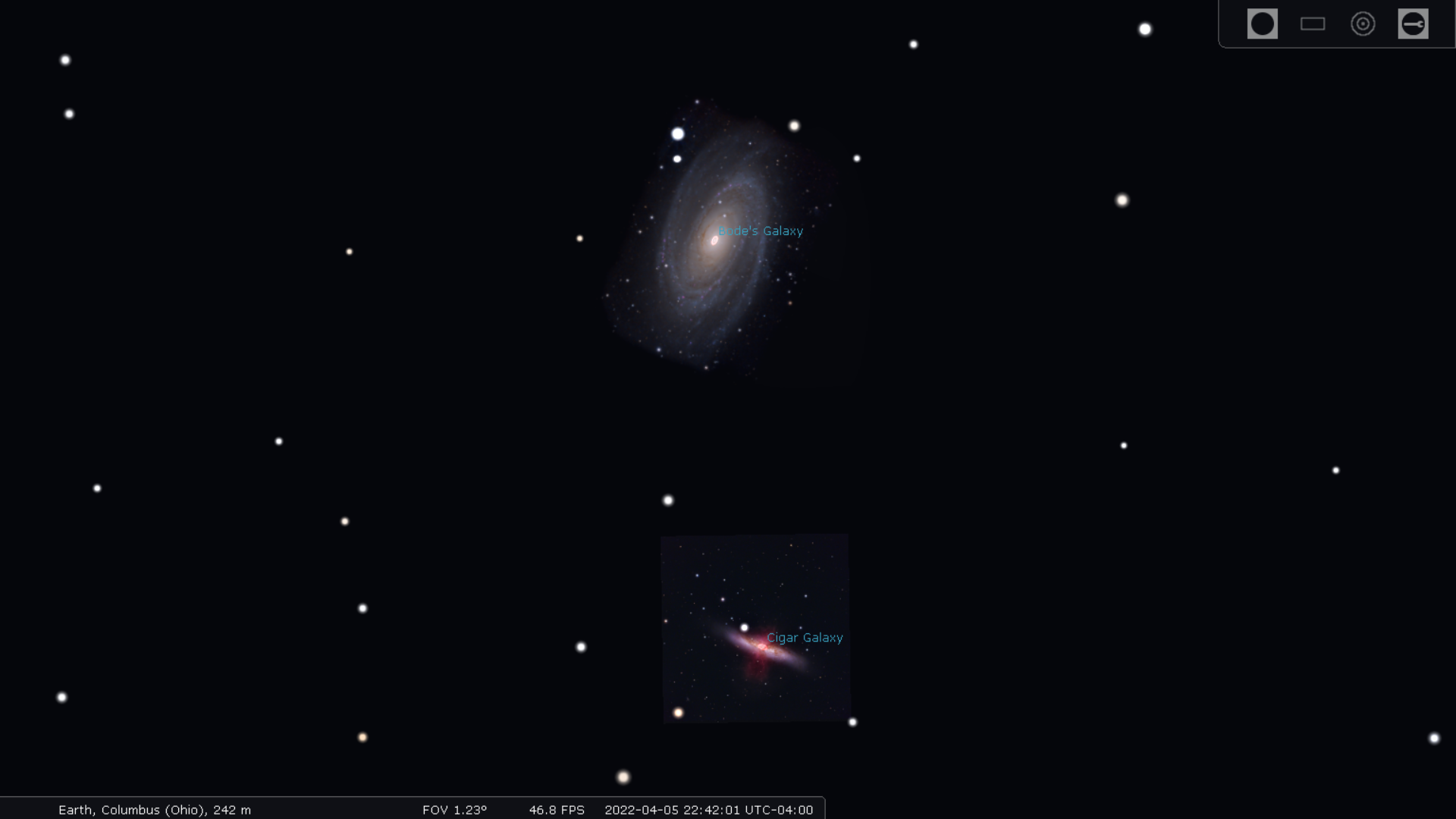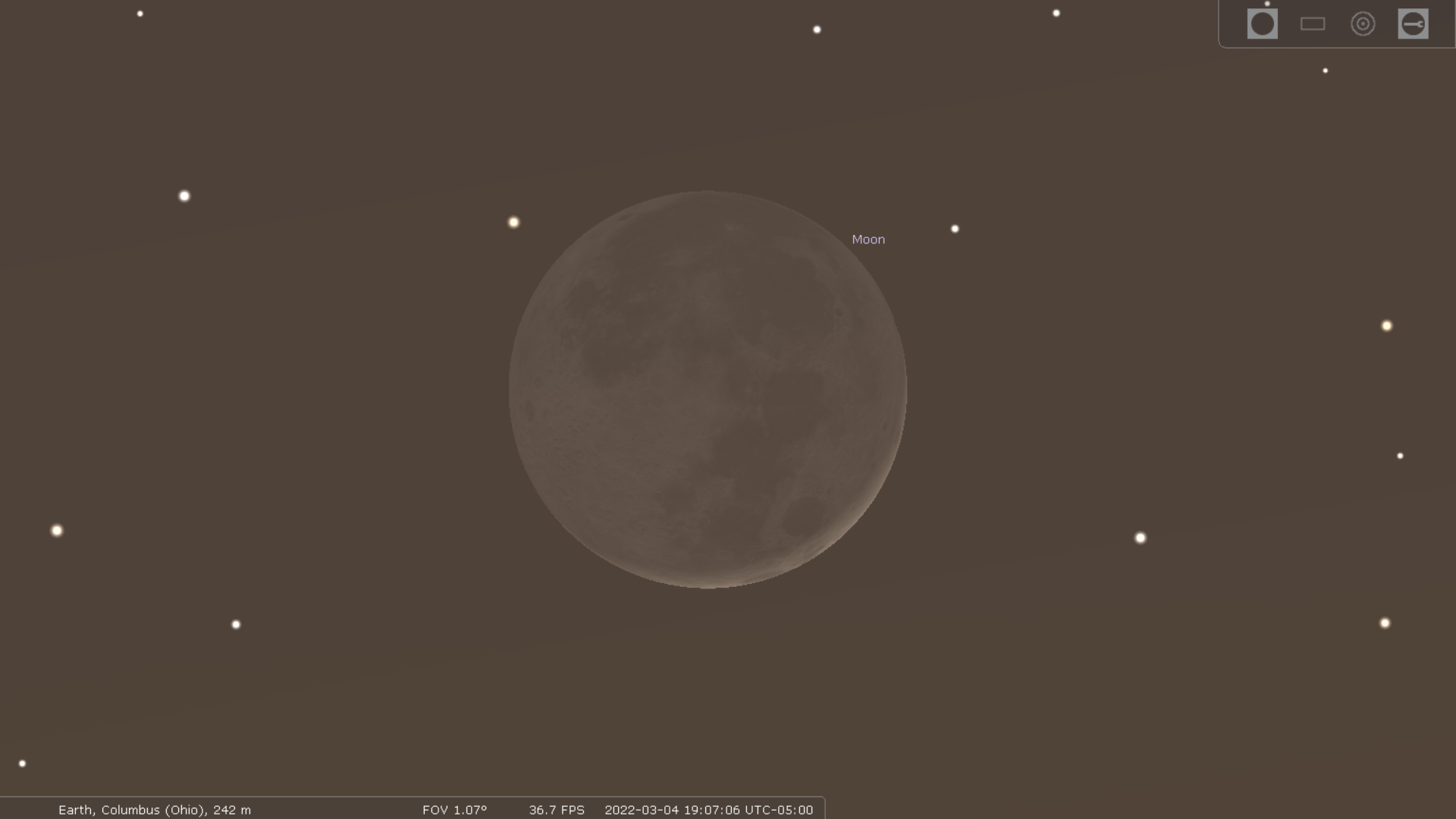The incoming thunderstorms and warm daytime temperatures this week are very indicative of the approaching midpoint of summer. Don’t let the storms scare you away from keeping an eye on the sky though because there might be some partially clear night skies through the weekend and into next week. The nighttime temperatures will swing from around 70°F at sunset to the low 60s by 5 AM. Sunset this week will be passing 8:50 PM and will only continue getting earlier as the season progresses. During the upcoming partially clear nights, try looking for Antares on the meridian, the Pipe Nebula, Stephan’s Quintet (imaged by the James Webb Space Telescope), and Saturn rising.
Roughly 50 minutes after sunset most of the brightest and “medium bright” stars will be naked-eye visible. One of these stars (likely initially visible just 30 minutes after sunset) is Antares. This red supergiant star can be found 25° above the southern horizon on the celestial meridian. Recall that your fist held at arm’s length is around 10° and the meridian is an imaginary line that runs from north to south in your sky. Antares has about 12x the mass of our sun and is so large that if you replaced the sun with Antares, all the inner planets (Mercury, Venus, Earth, and Mars) would be inside the star!
The bright, orange Antares is due south within a short time after sunset this week.
Most stargazers would love dark enough skies to see a beautiful and colorful emission nebula, but how about a dark nebula? The Pipe Nebula sits near the core region of the Milky Way (somewhat near to Antares) and is a region filled with interstellar gas and dust. This makes the nebula a “dark nebula” because it emits no light – it only absorbs/blocks light so we can only see it silhouetted against the stars beyond. The Pipe Nebula is naked-eye visible under dark skies and occupies roughly a whopping 10°x10° area in the sky. Being so near the core, the dense and bright collection of background stars helps to add lots of contrast to this object making it easier to see than most dark nebulae and more fun to image. (IMAGE: https://science.nasa.gov/pipe-nebula)
The Pipe nebula makes a great target for those with a DSLR and a telephoto lens.
A few weeks ago, the team behind the James Webb Space Telescope (JWST) released the first set of full color images from that scope. One of these images shows a collection of five interacting galaxies, NGC 7320, 7319, 7318a, 7318b, and 7317, or more compactly, Stephan’s Quintet. Despite the JWST having a focal length of 131 meters, most amateur telescopes with focal lengths of only < 1 meter can also see the quintet. These objects are not naked eye visible and do require darker skies to see since the brightness of each galaxy is magnitude 13 or more (even fainter). Try attaching a DSLR to your telescope and using long exposure to bring out more details of these faint and distant galaxies. (IMAGE: https://www.nasa.gov/image-feature/goddard/2022/nasa-s-webb-sheds-light-on-galaxy-evolution-black-holes)
This image, taken using the James Webb Space Telescope, was made from infrared light. The galaxy cluster, Stephan’s Quintet, can be photographed (not nearly as sharply, mind you) with amateur telescopes.
Around 9:45 PM most of this week, Saturn will be rising in the southeast. It is best to wait at least another hour or more before viewing Saturn through a telescope. This is because when it is close to the horizon, there is a lot more air that its light has to pass through to get to our eyes than when it is higher up in the sky. When its light passes through lots of air there is reduced contrast, Saturn may appear redder, and it may look shaky/wavy from all the turbulence. A telescope with a longer focal length (> 600mm) is the best way to get a close-up look at Saturn and to see the Cassini Division in the rings.
We are entering “Saturn Season” when the Ringed Planet will be up most of the night.
Get outside and enjoy the warm and hopefully partially clear night skies. If there are thunderstorms that pass by and you can see clear sky above the clouds, try looking for sprites, a red discharge caused by the lightning below! Bring a lawn chair or lay out a blanket and stare up into the endless cosmos. Among the infinite stars, try looking for Antares, the Pipe Nebula, Stephan’s Quintet, and Saturn peeking its head out.
Clear Skies!
































































































